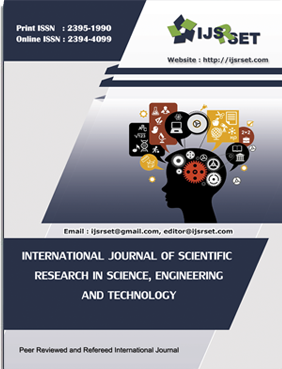Combinatorial Green Optimization of Individual Quick Freezer for Energy Savings through Linear Programming and Decision Theory of Shrimp Processing Industry : A Mathematical Approach
DOI:
https://doi.org/10.32628/IJSRSET24115103Keywords:
Assignment Method, MCDM, Individual Quick Freezer, Energy Savings, Material Selection, Sensitivity Analysis, Entropy, SAWAbstract
The nature is becoming more and more a catholic marketplace and this environment is forcing companies to take almost everything into consideration at the same time as well as low cost with high quality production. Increase flexibility is needed to remain competitive and respond to rapidly changing markets. An effective machine optimization process is very important to the success of any organization. Machine selection and optimization represents one of the most important decisions in a company to remain competitive, in this context, we try to solve the machine optimization for energy savings and machine selection for better efficiency and production. Machining optimization and selection represents one of the most important functions to be performed by the production department. The machine optimization is a multicriterion problem which includes both qualitative and quantitative factors (criteria). In order to select the best IQF (individual quick freezer), it is necessary to make a tradeoff between these tangible and intangible factors some of which may conflict. This report deals with machine-job allocation through linier programming model and machine selection through decision theory.
📊 Article Downloads
References
BIM. (2017). Ireland’s seafood development agency, Resource Efficiency Guide for Seafood Processors.
Pillai V K (1973). Special publication. Marine Biological association of India.
FAO (2010) the state of world fisheries and aquaculture (2010). (PDF) FAO of the UN
P. R. Amulya, Energy Optimization in Seafood Processing Industries (2018), Indian Food Industry Mag Vol 37 No 6,
Perry S J (2007). Process optimization to minimize energy use in food processing, Food Processing, 59-89. Science, Technology and Nutrition, Handbook of Waste Management Co-Product Recovery in Food Processing, 59-89. DOI: https://doi.org/10.1533/9781845692520.2.59
http://stellarfoodforthought.net/6-ways-tooptimize-your-facilitys-energy consumption
https://www.worldatlas.com/articles/leadingcountries-in-fishing-and-aquacultureoutput.html.
Bureau of Energy Efficiency (BEE). (2015). Manual on Energy Conservation Opportunities in Seafood processing industries in Kochi. BEE, New Delhi.
P. Jana, “Supplier selection under strategic decision environment,” Independent Journal of Management & Production, vol. 11, no. 1, p. 065, Feb. 2020, doi: 10.14807/ijmp.v11i1.1018. DOI: https://doi.org/10.14807/ijmp.v11i1.1018
Operations Research by D. S. Hira and Prem Kumar Gupta.
Downloads
Published
Issue
Section
License
Copyright (c) 2024 International Journal of Scientific Research in Science, Engineering and Technology

This work is licensed under a Creative Commons Attribution 4.0 International License.




